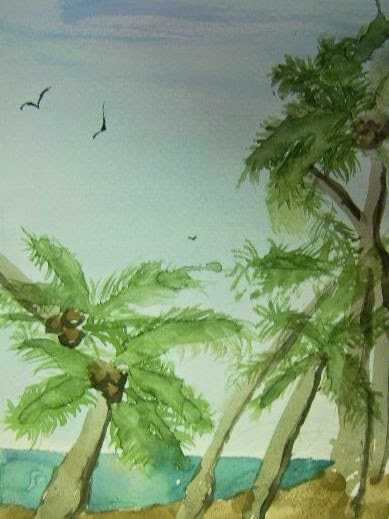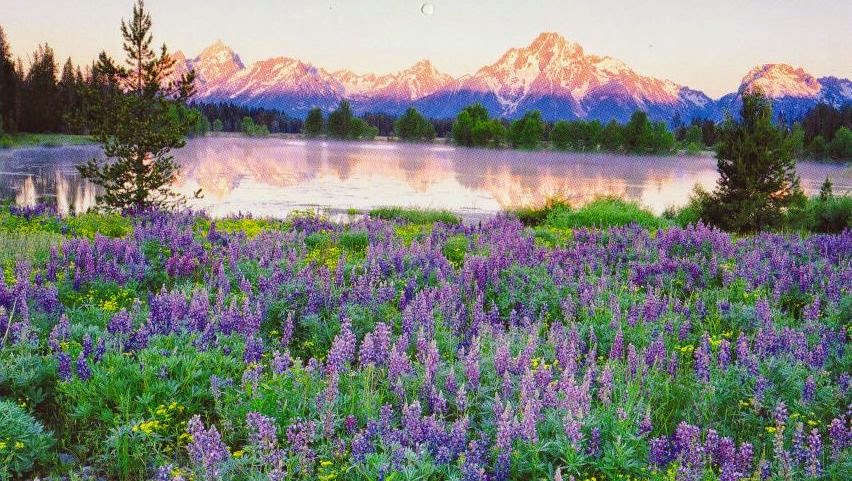- No intimidating giant white space to fill up
- Forces selectivity in deciding what to include and what to leave out, making it --
- Easier to simplify the composition into basic shapes and forms within the limited space
- Encourages use of a limited palette in the planning stages of the painting
- Makes it easier to describe the essence or the impression of the scene instead of painting every detail
 The process is simple. You'll need a 1/2 sheet of watercolor paper, approximately 5" x 8" and a basic watercolor pan set of 8 to 14 colors (nothing fancy). You'll need a soft round (not flat) watercolor brush - size 4 or 6, a mixing palette or tray, clean water, a drawing board, masking tape, and a No. 2 pencil.
The process is simple. You'll need a 1/2 sheet of watercolor paper, approximately 5" x 8" and a basic watercolor pan set of 8 to 14 colors (nothing fancy). You'll need a soft round (not flat) watercolor brush - size 4 or 6, a mixing palette or tray, clean water, a drawing board, masking tape, and a No. 2 pencil.
Select a photo of a landscape that appeals to you. Our favorite resource for beautiful landscape photos (as well as animals and flowers) is old calendars - don't throw them away! For this project, look for a scene with a distant background, a mid-ground, and a foreground.
Study your landscape photo. With eyes half closed, look for shapes and forms. Look for a satisfying composition. Select only a section of a large landscape to paint - not the whole thing! Ask yourself - how can I describe an impression or the essence of this scene? Using your pencil, sketch in the basic forms and shapes. Use these tips to keep going:
Tape your watercolor paper to the drawing board. Tape all four sides, covering 1/8 to 1/4 inch of the paper all the way around to leave a nice white boarder when you peel off the tape.
 Mask the photo with strips of paper to reveal only the portion you plan to paint. Example: Use the top right quadrant of this landscape photo.
Mask the photo with strips of paper to reveal only the portion you plan to paint. Example: Use the top right quadrant of this landscape photo. Simplify! You will not paint every detail - true art leaves something to the imagination.
Start with the distant background, usually with the sky, and work forward in space.
Leave each area to dry before moving on to the next to avoid colors bleeding together.
Don't overwork it; know when to stop! Remember to keep it simple.


No comments:
Post a Comment